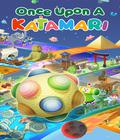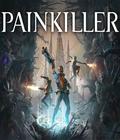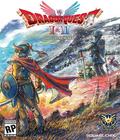
Genre: RPG
Publisher: NIS America
Developer: Gust
Release Date: April 25, 2006
 Atelier Iris was a far more popular game than it perhaps had any right to be. This had to be due, at least in part, to it being the only RPG to come out during the spring '05 season. It's very easy to make gamers try out something new when there's nothing comfortable or familiar to turn to in the meantime. Spring '06, however, has seen the release of a deluge of high-quality RPGs, in rapid succession: Grandia III, Tales of Legendia, Suikoden V, Shadow Hearts III, Kingdom Hearts II... and that's just for starters. Atelier Iris 2: The Azoth of Destiny is releasing to an audience that has been completely saturated with product. In such an environment, a game has to be a lot more than simply playable or interesting to get attention. Atelier Iris 2 comes close to succeeding at this, but is bogged down by a dreadfully flawed combat system. The result is a game that hardcore fans of Japanese RPGs can probably enjoy, but for a lot of gamers is going to end up feeling really lacking.
Atelier Iris was a far more popular game than it perhaps had any right to be. This had to be due, at least in part, to it being the only RPG to come out during the spring '05 season. It's very easy to make gamers try out something new when there's nothing comfortable or familiar to turn to in the meantime. Spring '06, however, has seen the release of a deluge of high-quality RPGs, in rapid succession: Grandia III, Tales of Legendia, Suikoden V, Shadow Hearts III, Kingdom Hearts II... and that's just for starters. Atelier Iris 2: The Azoth of Destiny is releasing to an audience that has been completely saturated with product. In such an environment, a game has to be a lot more than simply playable or interesting to get attention. Atelier Iris 2 comes close to succeeding at this, but is bogged down by a dreadfully flawed combat system. The result is a game that hardcore fans of Japanese RPGs can probably enjoy, but for a lot of gamers is going to end up feeling really lacking.
The primary virtue of Atelier Iris 2, oddly enough, is what it offers in terms of graphics and sound. The game's presentation is simply wonderful, showing off production values and attention to detail far superior to anything the original Atelier Iris offered. The characters are indicated by devastatingly adorable, high-resolution 2D sprites. Each character has a wonderful range of animations, especially in combat, and simply watching them run around the map in cut-scenes is thoroughly enjoyable. The game's color palette is bright and relaxing, and very easy on the eyes.
Backgrounds in AI2 still seem to be 3D-rendered, but have been covered with some sort of 2D treatment that makes you feel like you're wandering through a painting as you play. They may simply be true 2D isometric backgrounds, as none of the problems of navigating the 3D isometric backgrounds from Atelier Iris have returned in the sequel. Many visual effects that occur when you use combat abilities and items are 3D, but it takes a sharp eye to spot them against a world that otherwise seems to be pure 2D. Enhancing the presentation are some cel animated cut-scenes and an anime introductory sequence that makes the original's awkward Flash-like animation look completely pitiful. Suffice it to say that if you love 2D graphics for their own sake, this game is a must-play. It's a staggering display of the 2D power inherent in the PS2.
Game music for Atelier Iris 2 is, if anything, completely better than the music of the original. There's more variety in the tracks and the arrangements involve a wider array of instruments; some pieces blend with the storytelling and backgrounds in an absolutely sublime fashion. The voice acting on the Japanese track is solid if not supremely interesting, while the dub is on par with the above-average quality of the first game's English language track. NIS' localization for the sequel game is in most technical respects far superior to the first's. It suffers from none of the typos and rough text hacking that marred the original game. Atelier Iris 2 isn't quite as funny as the original title, but this is clearly because the original game was trying hard to be straight-faced. The English translation actually adds in fewer jokes than is typical for NIS, but the gags that are present feel a bit forced thanks to the overall more serious context. It's not Working Designs-level disruptive, but not quite on the same level as NIS-A's usual work.
The storyline for Atelier Iris 2 is a huge improvement over the original, in that there is one. The original Atelier Iris was basically a long exercise in fulfilling fetch quests, lacking both a compelling main villain and anything like a sense of danger or conflict. The game still worked thanks to the strong emphasis on the shop-owner characters and your own secondary party members, but to say it wasn't exactly a memorable RPG epic would be an understatement. Atelier Iris 2 offers a bit more to work with in the form of some actual central villains to fight and a far more intriguing premise.
AI2 follows a pair of characters separated into two different dimensions, able only to swap items back and forth through a shared inventory thanks to a pair of magic rings. Felt fights injustice in a wild world full of monsters, while Viese remains behind to synthesize new items in the gentler magical world of Mana. The characters who help Felt out in his party aren't quite as memorable as the original party from Atelier Iris, but Felt's relationship with Viese and his drive to save Mana gives AI2 a certain grounding that the original game always lacked.
The alchemy system got a major overhaul in AI2, and every change is an improvement. As in the first game, you still make new items by fusing other items together, but now you can only do this after finding a suitable recipe for what you want to make. The Weapon Synthesis system is gone outright, replaced by a beefed-up version of the Review Traits from the original game. Now, though, the Review Traits are properties that actually affect the way items behave when you use them. Weapons are formed by using alchemy items now, so stacking an item you use to make a weapon with desirable weapon traits through careful alchemy rewards your patient synthesis with supremely powerful equipment.
The items you use in alchemy are still basic item types (now called Harvested Items), but you have the option of using Alchemy Items and Equipment that you craft through alchemy in further alchemical experiments. Even nicer is that you now get clues about when changing the ingredients of a particular recipe will unlock a new recipe, instead of having to try the combination to see if it creates something new. You can use elemental alchemy to have Felt create copies of an Alchemy Item once Viese has created it the first time, so you still need to manage your stores of the different mana elements as in the first game. Unlike the first game, you can't break Harvested Items down into mana, so your mana stores are far more limited unless you constantly use Felt in combat. Like Krein before him, Felt can turn enemies into mana elements upon defeating them.
With so many virtues to discuss, you may be wondering why I describe Atelier Iris 2 as essentially a failed game in my introduction. That's because it introduces some tremendously terrible ideas into the combat system along with the immense improvements to everything else, then makes combat a much bigger focus of gameplay than it was in the original Atelier Iris. Property Reviews now exclusively describe combat traits of items, most everything you synthesize is meant to be used in combat, and there are more boss battles that actually attempt to be major challenges.
The problem, however, is that changes to the way character skills work and the introduction of the initiative bar have rendered combat basically one-dimensional. Winning battles simply isn't any fun. The initiative bar works more or less like the Grandia III initiative system, complete with an attack that can knock your opponent into a combo that makes them incapable of attacking. Setting up these combos is so easy that you may find yourself juggling bosses helplessly through 50-hit combos all through the game. The Skill System abandoned individual mana points for characters in favor a skill gauge that increases when using basic attacks or taking damage.
Using character skills consumes so many bars of the gauge. This simply means that any enemy you can't juggle to death, you simply find the character skill that damages it the most and begin spamming it persistently while healing. At least different Atelier Iris bosses would call for different tactics, but in AI2 it's not even fun to see how many enemies you can get into a single basic move's hitbox anymore.
It's a real shame, because when you're doing almost anything but fighting in AI2, the game is an enjoyable enough experience. Digging up new alchemy recipes and trying to make new items, or to trick out your extant items, is great fun. Seeing how changing Felt's world affects Viese is entirely interesting, as is pursuing the little NPC plotlines that concern the various shop-owners and allies you recruit. The plot is decently entertaining and the visuals are gorgeous. This game isn't bad, really, so much as it falls drastically short of its potential by focusing so much attention on a boring combat system. Atelier Iris 2 did well enough in Japan to merit a third sequel in the series, called Grand Phantasm, and I can only hope that game embraces all of AI2's strong points while addressing its glaring weaknesses.
Score: 7.0/10





















































